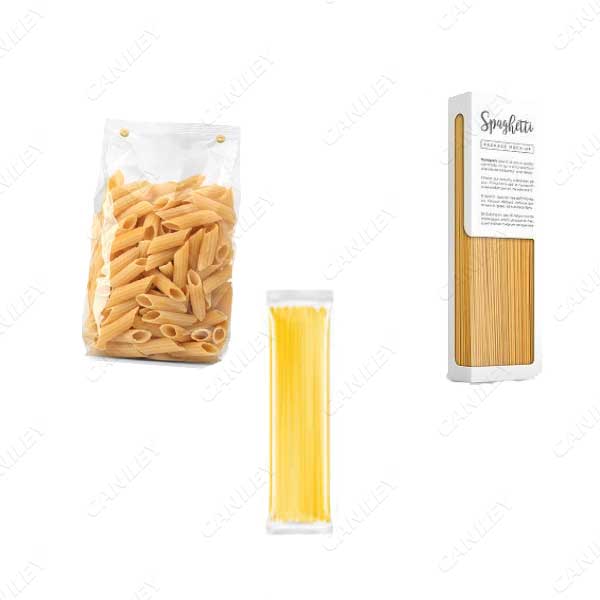When it comes to pasta, not only does its shape and texture matter, but so does its packaging. Pasta packaging plays a crucial role in preserving the quality, freshness, and flavor of this beloved staple food. From traditional cardboard boxes to innovative resealable bags, there are various types of pasta packaging available in the market. In this article, we will explore the what are the different types of pasta packaging and their unique features.

Cardboard boxes:
Cardboard boxes have been a popular choice for pasta packaging for decades. These boxes are typically made of sturdy, food-grade cardboard and come in various sizes, accommodating different quantities of pasta. Cardboard boxes provide excellent protection against external elements, such as light and moisture, ensuring the pasta remains fresh. They are easy to stack, store, and transport, making them a convenient choice for both consumers and retailers.
Plastic bags:
Plastic bags are a common form of pasta packaging, particularly for mass-produced and budget-friendly brands. These bags are often made of polyethylene or polypropylene, which are durable and provide a barrier against moisture and air. Plastic bags are lightweight, cost-effective, and transparent, allowing consumers to see the pasta inside. However, they may not offer the same level of protection as other packaging options and are less environmentally friendly.
Resealable bags:
Resealable bags have gained popularity in recent years due to their convenience and ability to maintain pasta freshness. These bags are typically made of plastic or a combination of plastic and foil, providing an excellent moisture and air barrier. The resealable feature allows consumers to open and close the bag easily, preventing pasta from becoming stale or attracting pests. Resealable bags are ideal for individuals who prefer to consume pasta over an extended period or in smaller quantities.
Vacuum-Sealed packages:
Vacuum-sealed packages offer the highest level of protection for pasta. These packages involve removing air from the bag before sealing it, creating a vacuum environment. Vacuum-sealed packages prevent oxidation, microbial growth, and moisture absorption, ensuring pasta stays fresh for an extended period. This type of packaging is commonly used for specialty or premium pasta products, such as artisanal or imported varieties. While vacuum-sealed packages are excellent for preserving pasta quality, they can be more expensive than other options.
Choosing the right pasta packaging is essential for preserving its quality, taste, and texture. Factors such as convenience, shelf life, cost, and sustainability should be considered when selecting the ideal packaging for your pasta.





















